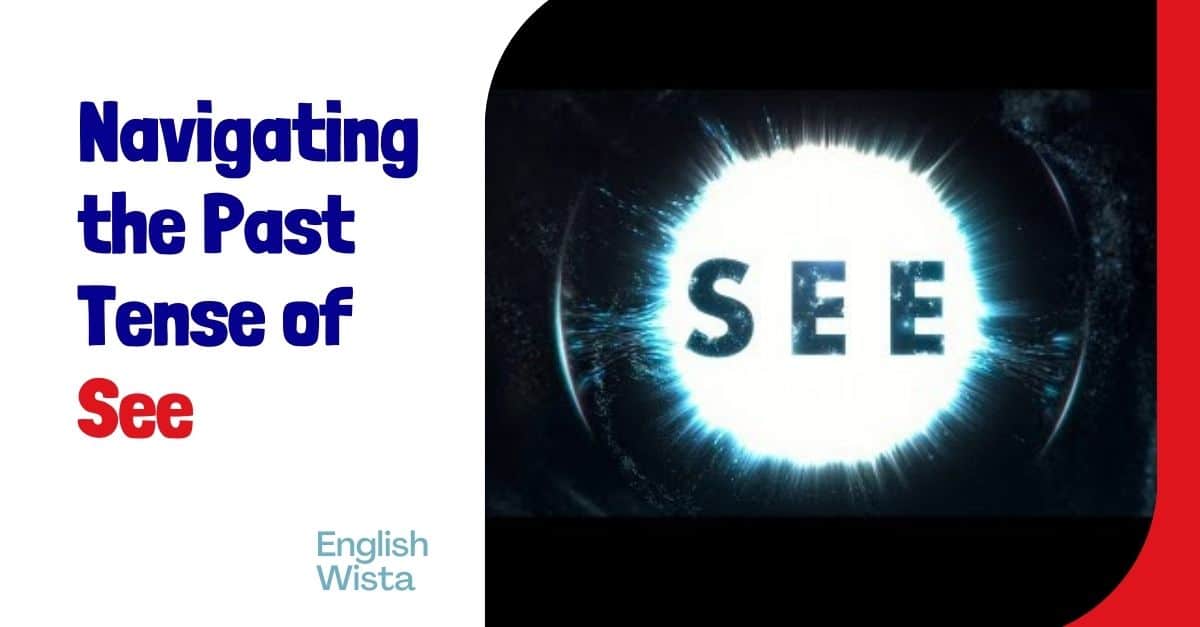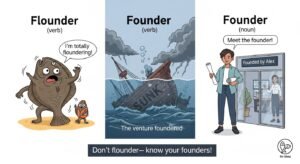Why Is the Past Tense of See So Confusing?
Have you ever found yourself pausing mid-sentence, unsure of how to express something you saw in the past? You’re not alone! The word “see” has a deceptively simple look, but its past tense forms can leave even native English speakers scratching their heads. Don’t worry—we’re here to break it all down in a way that’s easy to understand.
Let’s explore the tricky past tense of “see” together and make this a topic you’ll never feel unsure about again.
What Is the Past Tense of See?
The past tense of “see” is saw. That’s it! When you’re talking about something you witnessed or noticed in the past, “saw” is your go-to word.
Example Sentences:
- Yesterday, I saw a beautiful sunset.
- She saw her favorite actor at the mall last weekend.
- They saw a shooting star during the camping trip.
Quick Definition:
The verb “see” means to perceive something with your eyes or to observe something. In its past form (“saw”), it tells us this observation happened in the past.
Is “Seen” the Same as “Saw”?
Here’s where it gets a little tricky. “Seen” is NOT the same as “saw.”
When Do We Use “Seen”?
“Seen” is the past participle of “see.” You use “seen” only when there’s a helping verb like have, has, or had in front of it.
Example Sentences:
- I have seen that movie before.
- She has seen the Eiffel Tower in person.
- They had seen the warning signs but ignored them.
Notice how “seen” always has a partner? That partner is the helping verb that makes the sentence complete. Without it, “seen” doesn’t work!
Common Mistake:
People often mix up “saw” and “seen.” A sentence like “I seen the fireworks last night” is incorrect. Instead, say, “I saw the fireworks last night” or “I have seen the fireworks before.”
Why Is “See” So Irregular?
English verbs come in two flavors: regular and irregular. Regular verbs follow predictable patterns, but irregular verbs like “see” are rule-breakers.
For “see,” here’s how the forms look:
- Base form: see
- Past tense: saw
- Past participle: seen
Irregular verbs often come from Old English or earlier languages, which explains their unpredictable nature. Fun fact: The word “see” traces its roots back to Old English sēon, which also had irregular forms!
What About “Seeing”?
Good question! “Seeing” is the present participle of “see.” It’s used in continuous tenses or as a noun (gerund).
Example Sentences:
- Continuous tense: I am seeing improvements in my writing.
- Gerund: Seeing is believing.
It’s important not to confuse “seeing” with the past forms “saw” or “seen.”
How Can I Remember These Forms?
Memorizing verb forms can feel overwhelming, but here are a few tips:
- Repeat Examples Out Loud:
- Today, I see.
- Yesterday, I saw.
- I have seen.
- Make Flashcards: Write “see,” “saw,” and “seen” on one side, and their uses on the other.
- Use Mnemonics: Think of “seen” as needing a helper (“have,” “has,” “had”) because it’s “seen too much to work alone!”
- Practice Writing Sentences: The more you use these forms, the more natural they’ll feel.
Fun Facts About “See”
- Metaphorical Uses: “See” isn’t just about vision. It can mean understanding or experiencing something. For example:
- “I see your point.”
- “She’s seen a lot in her lifetime.”
- Common Expressions: “See” shows up in many idioms and phrases, like:
- “See eye to eye”
- “Wait and see”
- “As far as the eye can see”
- Cultural References: The verb “see” appears in countless song titles and lyrics. Think of The Who’s “I Can See for Miles” or Journey’s “I’ll Be Alright Without You.”
Quick Practice Quiz
Test your understanding with these sentences! Fill in the blanks with the correct form of “see” (see, saw, or seen):
- Last week, I ___ a rainbow for the first time.
- Have you ever ___ a live concert?
- She is ___ a specialist about her eyesight.
- We ___ the announcement yesterday.
- They have ___ that trick before.
(Answers: 1. saw, 2. seen, 3. seeing, 4. saw, 5. seen)
Wrapping It All Up
Mastering the past tense of “see” is simpler than it seems once you break it down. Just remember:
- Use saw for the simple past.
- Use seen with helping verbs like “have,” “has,” or “had.”
- Keep practicing with examples and exercises to build confidence.
Now, the next time you want to share a story about something you observed, you’ll know exactly which word to use. Happy learning, and keep an eye out for more fun English tips!



